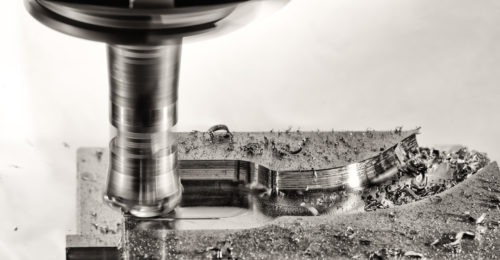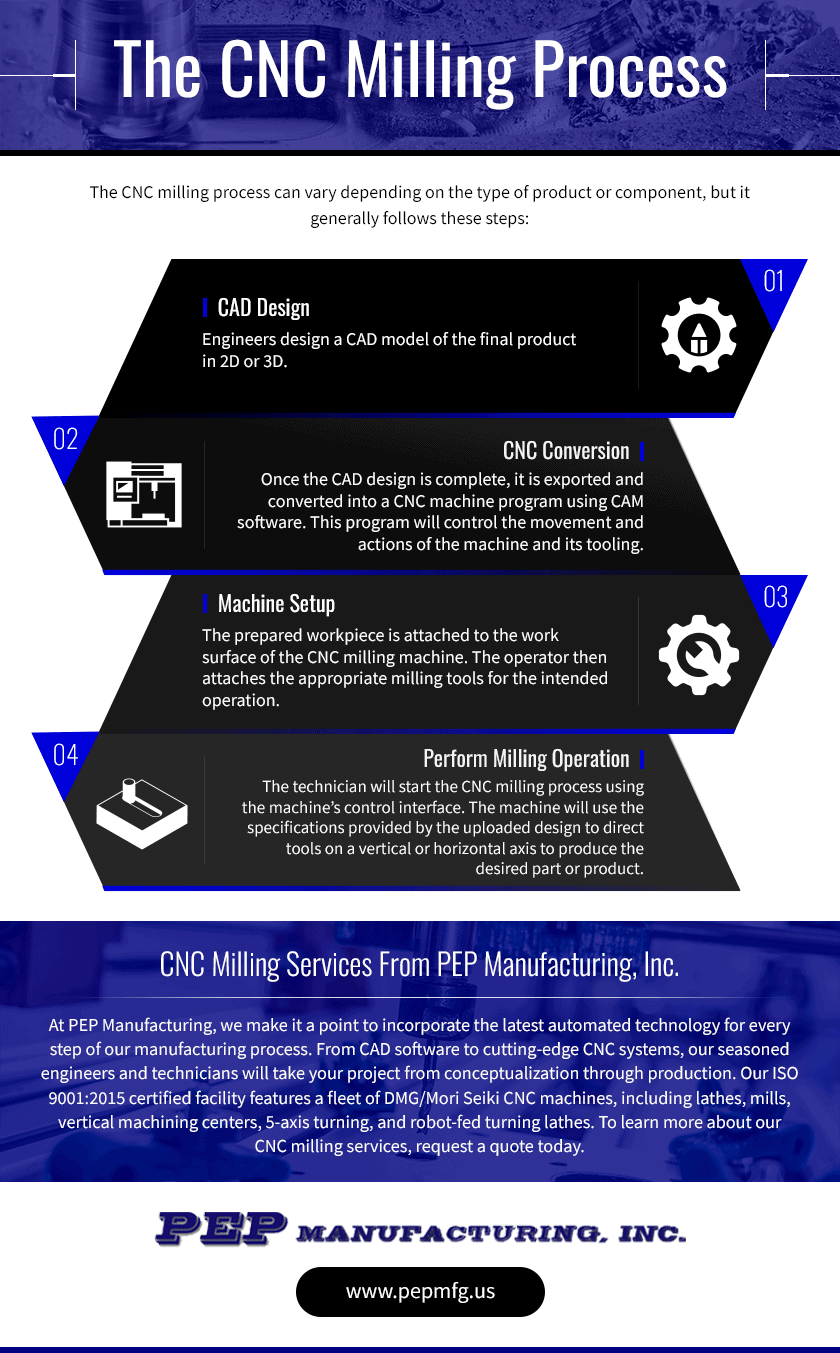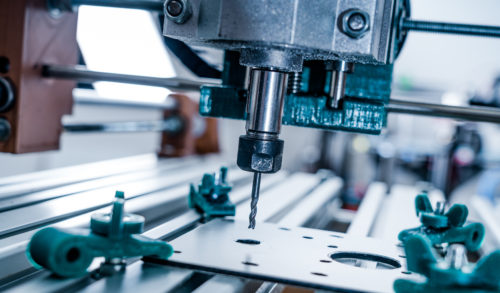What Is CNC Milling?
Computer numeric controlled (CNC) milling is a manufacturing method that operates multi-axis cutting and grinding tools through the use of computerized software. It is a subtractive process designed to strategically remove material from a workpiece to produce the desired shape. CNC milling is one of the most popular fabrication processes for complex components due to its exceptional speed and precision.
The automation of the process allows for added precision while reducing labor hours and the potential for human error. Because milling removes small amounts of material at a time, it is ideal for secondary and finishing processes on workpieces that have already been machined.
The CNC Milling Process
Effective CNC milling relies on high-performance machinery that incorporates a cutting tool, spinning tool, and feeder. Cutting tools on CNC milling equipment incorporate numerous sharp teeth suitable for cutting the workpiece. Spinning tools are used to turn the workpiece at high speeds on multiple axes, and the feeder uses the appropriate feed rate to move the material through the process.
The CNC milling process can vary depending on the type of product or component, but it generally follows these steps:
- CAD Design. Engineers design a CAD model of the final product in 2D or 3D.
- CNC Conversion. Once the CAD design is complete, it is exported and converted into a CNC machine program using CAM software. This program will control the movement and actions of the machine and its tooling.
- Machine Setup. The prepared workpiece is attached to the work surface of the CNC milling machine. The operator then attaches the appropriate milling tools for the intended operation.
- Perform Milling Operation. The technician will start the CNC milling process using the machine’s control interface. The machine will use the specifications provided by the uploaded design to direct tools on a vertical or horizontal axis to produce the desired part or product.
Common Milling Methods
CNC milling is a critical manufacturing process for a wide range of industries, including aerospace, transportation, marine, automotive, and oil & gas. As a highly versatile process, there are several CNC milling methods used to create components with specific characteristics.
The most common methods include:
- Plain Milling. Also known as surface milling, this process cuts surface material while rotating on an axis parallel to the workpiece.
- Face Milling. The cutting tool faces against the workpiece to remove material on a rotational axis perpendicular to the material’s surface.
- Angular Milling. The rotational axis of the tool is at an angle to the workpiece to create angled cuts, grooves, and dovetail joints.
- Form Milling. Form milling creates non-flat cuts such as contours, curves, and radii, and each type of curve requires a specific cutting tool.
CNC Milling Services From PEP Manufacturing, Inc.
As CNC technology continues to advance, more and more manufacturers benefit from the speed, precision, and cost-effectiveness of CNC milling. At PEP Manufacturing, we are committed to providing our customers with superior quality CNC machined parts and prototypes. With more than 20 years of experience, we have the in-depth knowledge and state-of-the-art equipment necessary to produce exceptionally accurate parts within even the most stringent specifications.
At PEP Manufacturing, we make it a point to incorporate the latest automated technology for every step of our manufacturing process. From CAD software to cutting-edge CNC systems, our seasoned engineers and technicians will take your project from conceptualization through production. Our ISO 9001:2015 certified facility features a fleet of DMG/Mori Seiki CNC machines, including lathes, mills, vertical machining centers, 5-axis turning, and robot-fed turning lathes. To learn more about our CNC milling services, request a quote today.



